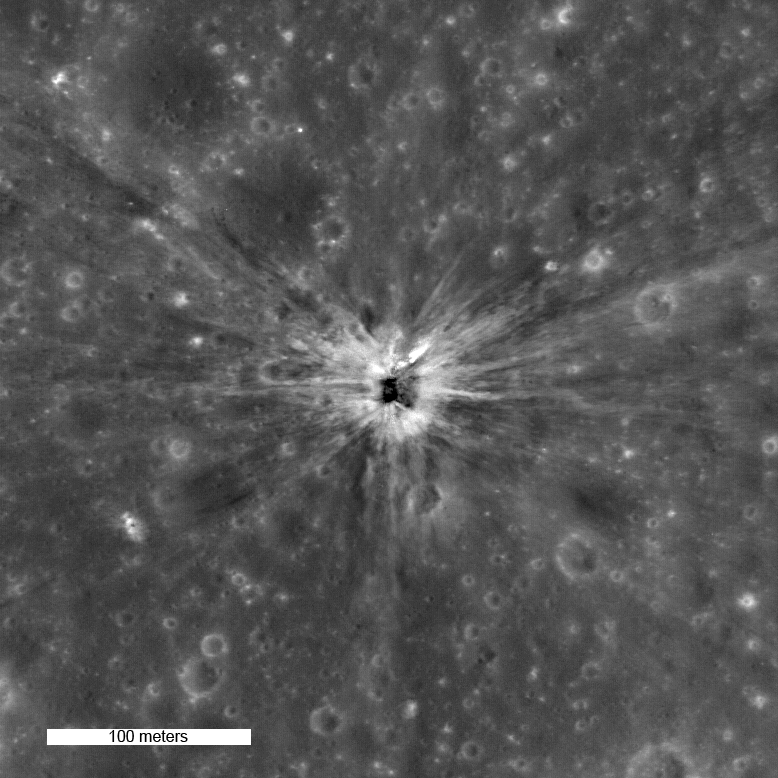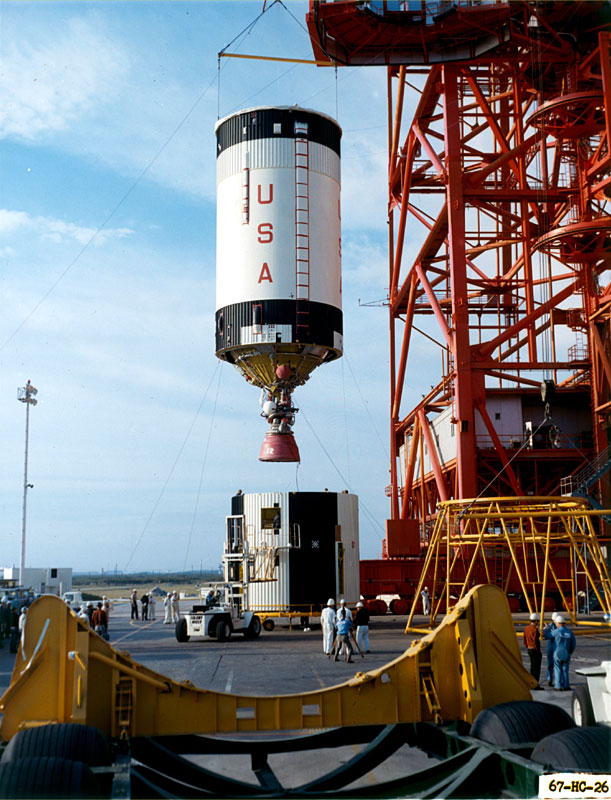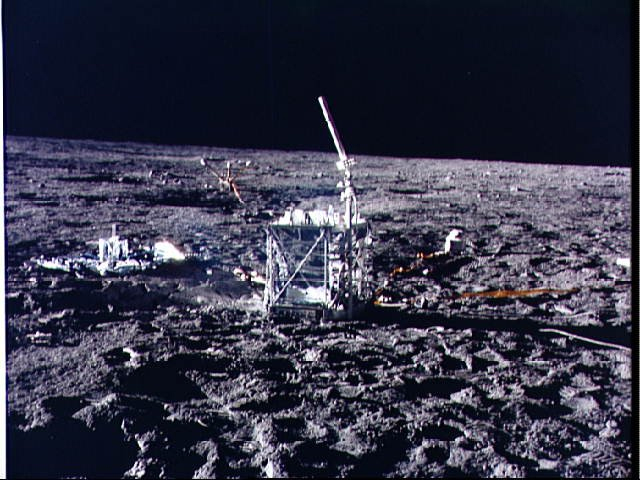
In April, the Apollo 13 Saturn V blasted off towards the Moon. The Saturn rocket consisted of a 3-stage launching system. While the first and second stage of the launch vehicle dropped back to Earth after launch, the third stage (S-IVB) was used to propel the docked Apollo Command Module and Lunar Module from Earth orbit into a lunar trajectory. The spent rocket booster then separated from the Command Module and later impacted the Moon. From the tracking of the radio signals of the rocket, the impact locations on the Moon and the impact times were fairly well known.

Seismogram of the Apollo13 S-IVB impact recorded at the Apollo 12 seismic station in digital units (DU). The three traces designate the signal of the 3 orthogonal components of the ground motion at long wavelengths. The arrows mark the arrival times of the p (primary) and the slower s (secondary) seismic waves (image modified from: Ewing, M., et al., (1971), Seismology of the Moon and implications on internal structure, origin and evolution, in: De Jaeger (Eds.): Highlights of Astronomy, IAU, pp.155-172)
The impacts by the S-IVB stages represented unique calibration signals for the Apollo seismic station network, which operated on the lunar surface from 1969 - 1977. Since the rocket impacts occurred at known times and places, the seismic wave velocities, in particular those within the upper lunar crust could be measured directly.
At the time of the Apollo 13 mission, only the seismometer at Apollo 12 was available, which had been deployed 5 months earlier. The S-IVB impact occurred at a distance of 135 km from that seismic station.
The seismic station at the Apollo 12 site. The seismometer monitors the level of ground motion to detect arriving seismic waves. The instrument (left) is protected by metal foil against the varying temperatures on the lunar surface that produce large thermal stresses (NASA image).
Analysis by the LROC team now have identified the craters associated with most of the rocket impacts in their predicted areas. Taking advantage of the precise LRO orbit and LROC pointing knowledge, it is now possible to determine the impact coordinates of rockets and their distances from the seismic stations more accurately to within a few hundred meters, over time as the orbit calculations are improved these estimates will in turn become more accurate. The precise impact coordinates may warrant a reanalysis of the seismic calibration data for improved models of seismic wave propagation within the Moon and the Lunar interior structure. The seismograph network recorded more than 13,000 seismic events and delivered some of the most important scientific results of the Apollo missions.
Find the Apollo 13 S-IVB impact crater in the full NAC image. Review an earlier LROC image posting of the Apollo 14 S-IVB impact crater.
Published by Juergen Oberst on 22 March 2010

